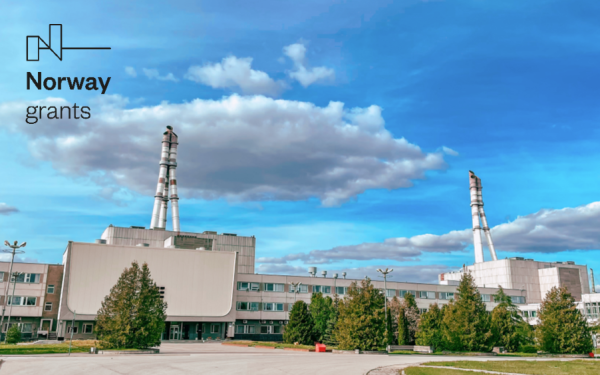Ignalina Nuclear Power Plant successfully completed Norwegian-funded project
2024

The Norwegian Financial Mechanism-funded project ‘Improving the Safety of Radioactive Waste Management at the Ignalina Nuclear Power Plant’ was started in 2020. The aim was to improve the management, control and prevention of adverse impacts on the environment, ecosystem and population by strengthening the decommissioning system of the nuclear facility at the Ignalina Nuclear Power Plant (INPP). Several important tasks were also completed during the implementation of the project, including the development of a concept for the final disposal of spent fuel and radioactive waste in Lithuania. Radioactive waste management and decommissioning processes were improved, concepts for a bituminous waste storage facility and an industrial waste landfill were revised, and considerable attention was paid to the improvement of the qualification of specialists. The total project budget is more than EUR 3 million.
Linas Baužys, Director General of the INPP, said: "During the decommissioning of the nuclear power plant, priority is given to the safe management of different types of radioactive waste. To ensure that radioactive waste does not pose a risk to the environment around us, we are designing, building and commissioning state-of-the-art radioactive waste treatment, storage facilities and repositories. These are unique projects in the world, implemented with the support of the international community. The Norwegian Financial Mechanism-funded project, which we have successfully completed together with our partners, the Norwegian Radiation and Nuclear Safety Authority (DSA) and the State Nuclear Safety Inspectorate (VATESI), has contributed to the realisation of this goal".
Linas Baužys also emphasised that the issues of the deep geological repository and radioactive waste management are of key importance for the overall dismantling process of the INPP reactors and for ensuring a safe environment. Cooperation with foreign specialists with high expertise in the field of nuclear energy provides an opportunity to progressively develop these exceptional and significant projects by adopting the knowledge and best practices of other countries.
The Bituminous Radioactive Waste Storage Facility at the INPP started operations in 1987. Today, the 5,600 square metre building contains 14,400 cubic metres of bituminous compound, or in other words, bituminous evaporated radioactive salts – that’s almost the equivalent of six Olympic swimming pools. The aim is to convert this storage facility into a short-lived low and intermediate level radioactive waste repository.
According to Linas Baužys, the modernisation of the storage facility for bituminous waste is a task that is unprecedented in global practice. Cooperation with the international nuclear energy community, where modern technological solutions are used together to ensure that the management of radioactive waste is carried out as safely as possible in the shortest possible time, remains crucial in this case.
This joint project also included the preparation of a methodology for the removal of radiation control of industrial waste and the preparation of a study programme for the holding grounds, where more than 30,000 cubic metres of waste was accumulated during a period of over 30 years. The studies have contributed to a report on the determination of unconditional no-control radioactivity levels.
The long-lived radioactive waste currently in interim storage will have to be disposed of finally in a deep geological repository. This is also provided for in the Development Programme for the Management of Nuclear Facilities and Radioactive Waste for 2021–2030, approved by the Government.
The final location for the deep geological repository is to be confirmed by 2047 from the 77 shortlisted to date. The deep repository will be built and commissioned in 2068. Until then, the concept will be adjusted depending on the progress of the project development.
Disposal of radioactive waste in a deep geological repository is currently considered to be the only sustainable and safe way to safely isolate it without harming people and the biosphere. It will provide natural and engineered barriers to keep people and the environment safe. More information on the DGR project can be found here.
The Norwegian-funded project was allocated a total budget of more than EUR 3 million. Some 85% is from the Norwegian Financial Mechanism, and the rest is from co-financing. Part of the funding received for the project was used for the development of the deep geological repository concept, the financing of a geophysical survey programme, the socio-economic assessment of potential sites for the deep geological repository, and the preparation of a description of exploratory boreholes.
Another part of the financial support was used for radioactive waste management, and for improving decommissioning processes and developing staff competences.
The project to improve the safety of radioactive waste management has been positively evaluated by the VATESI, the Central Project Management Agency (CPMA), and the Norwegian Radiation and Nuclear Safety Authority (DSA).

